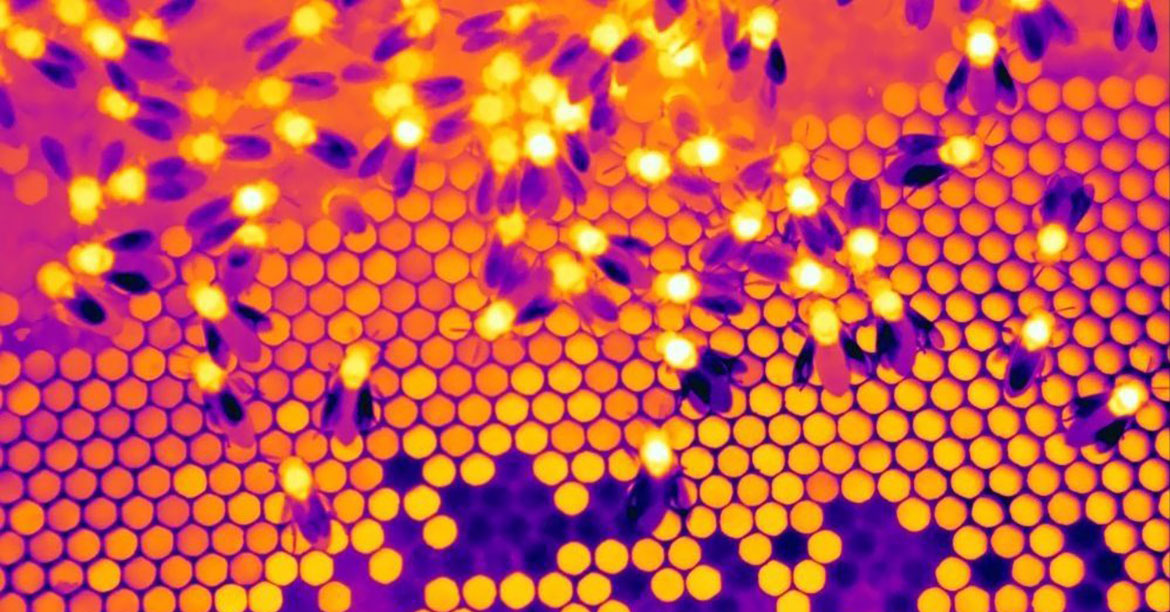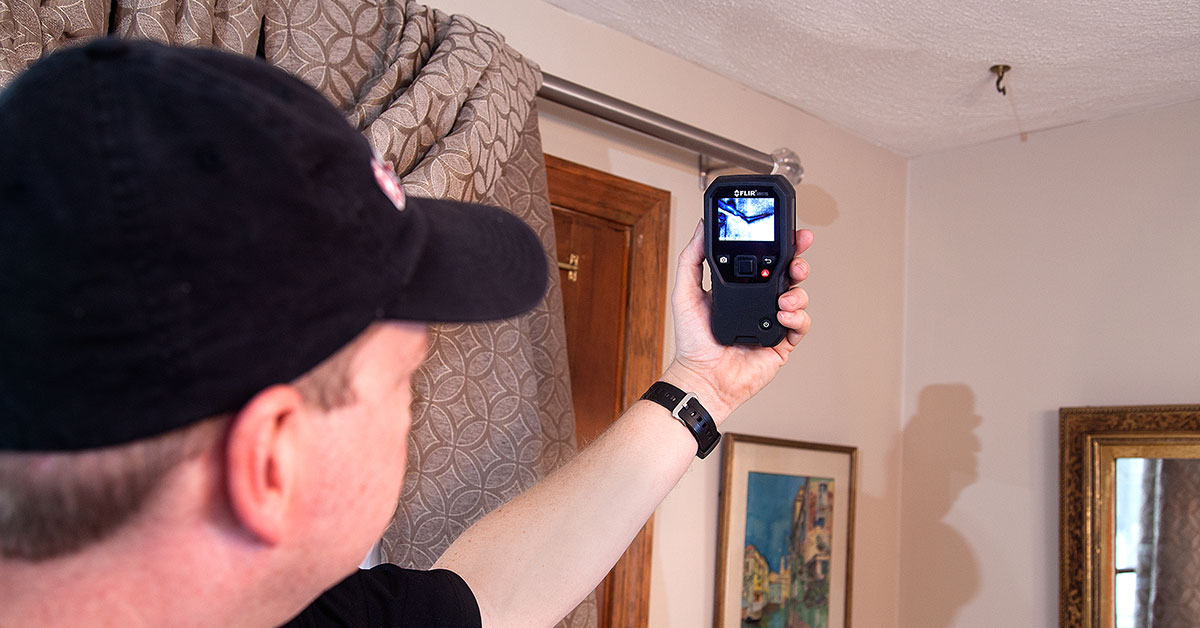Detecting Pests with Thermal Imaging

Thermal imagers are an increasingly popular, non-intrusive solution for finding pests in walls and other hidden places. From rodents to hornets to termites, many homeowners and building maintenance professionals are using thermal to quickly locate nests and avoid spreading chemicals like insecticides around homes. However, successfully finding pests requires understanding a few key things about thermal imaging.
Seeing Through Walls?
First, let’s clear up a common misconception: thermal imaging cannot see through walls. Instead, thermal cameras detect temperature differences on the surface of a wall that is caused by something on the other side. For instance, a thermal camera won’t pick up a rodent moving through a wall, but could detect a rodent nest that has been generating heat for a long period of time and caused the outer wall to warm up. Check out the article Can Thermal Imaging See Through Walls? to learn more.
Looking for Patterns
If a large heat source like a nest isn’t obvious, sensitive thermal cameras may be able to detect irregular heat patterns, moisture, and other signs of damage that indicate the presence of a pest, like missing insulation or holes in walls that indicates an entry point. Understanding what patterns to look for requires training and practice, as it’s easy to incorrectly interpret an image.
Here’s some indicators to look for when trying to locate the following common intruders:
Termites

Termites nests may be visible as hotspots (left), and termite tunnels have high moisture content that can be detected with thermal imaging (right).
Termites can be found by looking for nests, moisture sources, and evidence of damage in walls. When termites enter a home, they release heat from their digestive system in the form of carbon dioxide and construct mud tubes that have high moisture content, creating irregular heat patterns on the surface of walls, ceilings, and floors.
Rodents

Rodents (like the possum on the left) or their nests may be visible, or wildlife activity may leave clues like missing insulation (right).
Rodents and other wildlife might create nests that can be detected, or might have damaged walls or moved insulation and created cold spots that can be seen in thermal. Nocturnal animals that emerge at night can also be tracked with thermal imaging, which works in complete darkness.
Hornets and Other Social Insects

Hornet nests show up as hotspots in thermal.
Insects are cold-blooded, but they do generate heat. The heat of a wasp nest, beehive, or other large cluster of social insects will usually generate enough heat to be detected by a thermal camera.
Even if you know what to look for, pests are not always obvious. In general, we recommend taking a training course with the ITC or hiring professional help if your pest problem isn’t easily located.
What Camera Do I Need?
The thermal camera needed depends on your pest situation. If you’re looking for a nest that’s generating a lot of heat, you may be able to spot the problem with an entry level camera like the FLIR ONE Pro or FLIR C3.
If you’re looking for termites and need to find evidence of moisture damage, you’ll probably need a higher-resolution solution like a FLIR Exx-Series camera.

A termite nest under the floorboards is revealed with thermal imaging.
Thermal cameras take the guesswork out of pest detection, saving inspectors hours of work, helping identify the exact location of nests, and minimizing the amount of damage needed to remove them. Learn more about FLIR thermal camera solutions for building inspection: https://www.flir.com/instruments/building-diagnostics/building-inspection/


